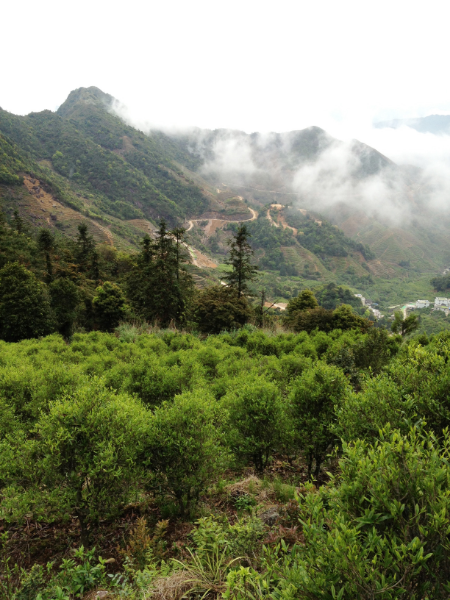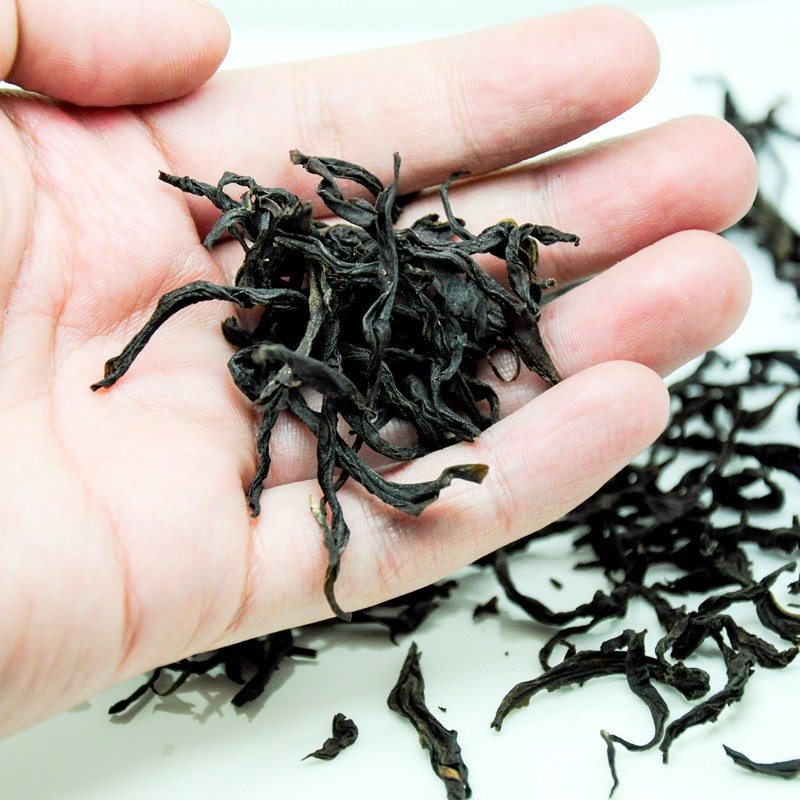What kinds of oolong tea do you have? Is the alpine oolong tea that likes tea Dongding Oolong Tea of Taiwan?
First of all, let's learn some basic knowledge: what is oolong tea? Oolong tea is a type, type or genre of tea that is a group of similar teas. Other categories that may be more familiar are green tea and black tea. In general, all teas have unique geographical location, plants (different varieties of camellia or a few closely related camellias), processing and heritage, history and human culture. Each kind of tea is unique in all these aspects, and all families, or types of tea, are different in all these aspects. I will start with an overview of a region, because oolong tea is a specialty of the Chinese region. Oolong tea is endemic to some areas. In China, almost all tea producing areas have black tea and green tea, but only a few areas process oolong tea. When it comes to China, there are three regions that have their own style of oolong dance. The picture above is a language map showing the different local languages of the region. I hope this will help us understand a culturally diverse region.
Wuyishan Minbei Oolong it is usually considered that the origin of oolong tea is in Wuyishan, southern China's northern Fujian. Wuyi Mountain is a special mountain area that produces the best oolong tea on earth. Oolong tea grown in the Wuyi Mountains is called rock tea, "skeleton rocks and scented flowers". The tea is black, long and twisted, and the tea is crimson. The most famous is Dahongpao, which sometimes uses the general oolong tea area. Other common daffodils and cinnamon. More generally, the tea in Wuyi Mountain and northern Fujian is called Minbei oolong tea, which is the general name of the region. The picture above shows the local language map of the area, and the red color shows the area of northern Fujian.
Anxi Minnan Oolong further south, there is Minnan Oolong tea in Fujian. The most important thing is Tieguanyin from Anxi. These teas are usually rolled into balls. Today, most oolong teas are processed very light, with dark green leaves and green or yellow leaves. Traditionally, Minnan tea is also dark, but dark leaves can still be found soaked in amber tea. Southern Fujian is the blue area of the mainland. As shown on the language map, Taiwan also speaks the same language.

Chaoshan Dancong Oolong Tea the third major area of Chinese oolong tea is in Chaoshan, Guangdong, and Fenghuang Dancong is highly sought after, unique tea. On the map, Chaoshan area is located in the pink area around Chaozhou and Shantou (Chaoshan is actually the abbreviation of these towns). The tea in Chaoshan is long and twisted. Traditionally, they are also baked a lot, although there are more changes now: some varieties are usually green, while others remain dark.
Taiwan's alpine oolong tea most of Taiwan's population is actually the descendants of Ming immigrants in these areas, especially in southern Fujian. This is why Taiwan's oolong tea is world-famous: Chinese settlers come from oolong tea producing areas on the mainland, so they naturally grow and cultivate oolong tea there. In the history of Taiwan oolong tea, we can see the influence of southern and northern Fujian on Taiwan oolong tea, although the style of oolong tea there has changed. The most famous Taiwan alpine oolong tea style, or alpine tea, is generally light, steep yellowish. Others include packaged, soft and oxidizing oolong tea (Bai Hao Oolong), which is usually green.
Important Notice :
前街咖啡 FrontStreet Coffee has moved to new addredd:
FrontStreet Coffee Address: 315,Donghua East Road,GuangZhou
Tel:020 38364473
- Prev

The taste characteristics of Yunnan ancient tree Yunnan black tea which brand of tea-loving Yunnan black tea is used?
Dianhong is a kind of black tea. It is very delicious. Dianhong is a short version of the title. Dianhong is actually black tea from Yunnan. The Chinese character is Yunnan, which is both for Yunnan and the old name is still as a short version. What is even more confusing is that what the West calls "Blacktea" is called "black tea" in China.
- Next

How much is the duck shit fragrant oolong of Nai Xue's tea? Does Nai Xue's duck shit smell taste good? what are the characteristics of the taste?
When I bought a sample of this tea in 2017, I almost eliminated the single clump: the single clump on the market had too many flaws and even had a chemical flavor. After talking to the single clump on the farm, I changed my mind! I found something good. This kind of tea tastes smooth, neither astringent nor bitter, and the taste comes from tea.
Related
- The milk tea cup becomes smaller?! Overlord Tea Girl launches a new "Return to Yunnan" series
- Accused of selling counterfeit and high-priced coffee beans! Well-known boutique coffee brand "Oukelao" bowed and apologized!
- How to make espresso dumplings? Can I eat coffee and glutinous rice balls together?
- Save the unformed and stagnant powder cakes in one second! What is the problem with stagnant water in the powder bowl of the espresso machine?
- What does hand-brewed coffee stop mean? Why is it not recommended to make coffee by hand?
- Is it normal to smell like coffee? Why does coffee smell like alcohol? What's wrong with the strong smell of cold extract ice dripping ice brewed coffee?
- How to solve the problem that hand-brewed coffee extraction takes too long? Why is the water flowing so slowly when making coffee?
- The main points of making Australian white coffee, the proportion details, how does Australian white properly foam and blend the flowers?
- Can ice water make cold extract coffee? What is the difference between room temperature water and ice water for making cold coffee?
- What milk is best for making latte and white Dirty coffee? What is the difference between different brands of fresh milk and pure milk for making coffee?

